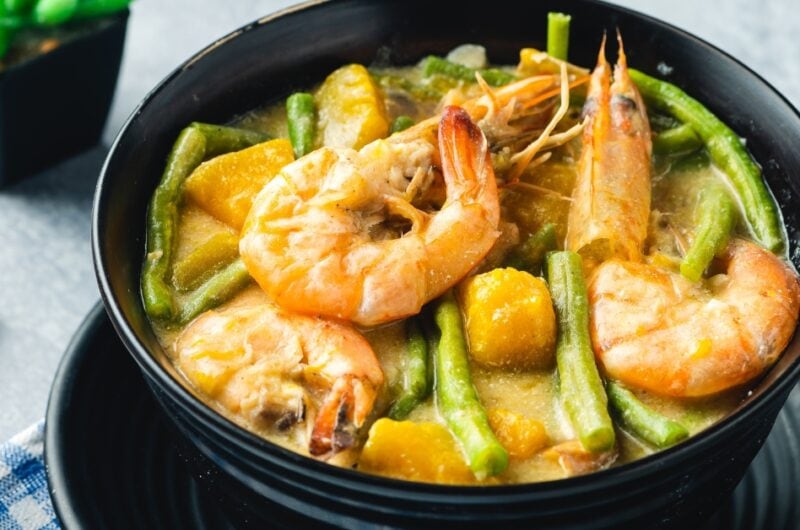Relish Traditional Filipino Flavors With Easy-To-Follow Recipes
Exploring traditional Filipino cuisine supplies an one-of-a-kind opportunity to involve with a rich tapestry of tastes and social narratives. Each dish, from the iconic adobo to the vivid sinigang, tells a tale that reflects the Philippines' varied cooking heritage. By accepting easy-to-follow recipes, anybody can recreate these beloved meals in the house, fostering connections with friends and family with shared experiences. Nevertheless, comprehending the essential ingredients and methods is essential for attaining genuine preference. As we discover these culinary traditions, one may wonder how to finest bring the warmth of Filipino hospitality to their very own eating table.

Overview of Filipino Food
Checking out the dynamic tapestry of Filipino food exposes a rich social heritage influenced by various historic and geographical aspects. The Philippines, an island chain of over 7,000 islands, flaunts a diverse array of tastes and cooking techniques. The nation's culinary landscape is formed by indigenous traditions and the influences of emigration, trade, and movement. Because of this, Filipino cuisine is a special blend of Malay, Spanish, Chinese, and American components.
Rice offers as the foundation of Filipino dishes, often come with by an assortment of veggies, meats, and fish and shellfish. Making use of vibrant tastes is a hallmark of the food, with ingredients such as garlic, onions, ginger, and soy sauce playing critical roles. Furthermore, the focus on communal eating shows the Filipino culture of hospitality and family members ties.
Street food likewise plays a substantial duty in the cooking scene, showcasing local active ingredients and imaginative food preparation techniques. As the Philippines proceeds to embrace globalization, the blend of conventional and modern impacts can be seen in modern Filipino meals, further enriching its culinary identity. Filipino food recipes. Generally, Filipino cuisine is a testament to the country's background, society, and dynamic spirit
Must-Try Conventional Recipes
Filipino food is finest experienced via its standard dishes, each supplying an one-of-a-kind understanding into the country's diverse cooking heritage. Amongst the must-try meals is Adobo, a savory stew normally made with hen or pork, marinated in vinegar, soy sauce, and garlic before being slow-cooked to perfection. Its abundant and tasty taste profile stands for the heart of Filipino comfort food.
Another legendary recipe is Sinigang, a sour soup typically prepared with tamarind, tomatoes, and various veggies. This meal can include pork, shrimp, or fish, and is treasured for its revitalizing preference and heating qualities.
Lechon, a whole roasted pig, is a centerpiece at Filipino parties, known for its crunchy skin and tender meat. It personifies the cheery spirit of Filipino gatherings.
For those desire something sweet, Halo-Halo is a fascinating treat combining smashed ice, sweetened fruits, jellies, and covered with leche flan and purple yam.
Each of these conventional meals envelops the essence of Filipino culture, welcoming anybody to enjoy the dynamic tastes and rich background that specify the archipelago's culinary landscape.
Step-by-Step Recipes
Cooking genuine Filipino meals in your home can be an enhancing experience that brings the vivid flavors of the Philippines into your kitchen. With a huge selection of why not try here conventional dishes to pick from, employing step-by-step recipes allows both amateur and knowledgeable chefs to grasp the strategies and tastes integral to Filipino food.
Begin by selecting a dish that intrigues you, such as adobo, sinigang, or lumpia. Each recipe usually consists of an in-depth active ingredient listing adhered to by clear directions, leading you with the cooking process.
As you progress, pay close focus to cooking strategies special to Filipino food, such as sautéing (ginisa) or stewing (nilaga) These approaches can considerably boost the depth of flavor in your recipes. Moreover, timing is important; follow the suggested food preparation times to attain the perfect texture and preference.
Vital Ingredients and Tips
Regularly, the key to grasping Filipino cuisine exists in understanding and using vital components that specify its distinct tastes. Central to several recipes are staples like soy sauce, vinegar, garlic, and ginger, which add to the unique equilibrium of tasty, sour, and sweet notes. Soy sauce acts as a base for sauces and sauces, while vinegar, specifically walking cane vinegar or coconut vinegar, imparts an appetizing illumination that is critical in meals like adobo.
Rice is an indispensable element of Filipino meals, often served alongside main courses to take in tasty sauces. For a touch of credibility, choose jasmine or long-grain rice. In addition, making use of fresh produce such as tomatoes, eco-friendly beans, and eggplants boosts the meal's vibrancy and nutritional value.
Do not overlook the significance of herbs and spices, such as bay leaves, lemongrass, and chili peppers, which raise the taste account. When cooking, bear discover this in mind that persistence is key-- allowing ingredients to fuse with each other leads to richer flavors. Embrace the technique of tasting as you look at more info go; this will allow you to adjust flavorings and attain the perfect balance that characterizes Filipino food.
Offering and Enjoying Filipino Meals
Comprehending the subtleties of Filipino cuisine expands beyond prep work and components; it incorporates the method dishes are offered and taken pleasure in. The Filipino dining experience is identified by common sharing, advertising a feeling of togetherness and celebration. Generally, meals are presented in huge servings, allowing diners to take part in a selection of tastes.
Rice, a staple in Filipino meals, is typically functioned as the structure whereupon the various other meals rest. Coming with viands, such as adobo, sinigang, or lechon, are positioned in the center of the table, inviting visitors to serve themselves. Filipino food recipes. This practice not only cultivates a loosened up ambience yet additionally motivates discussions and links among restaurants

Final Thought
In conclusion, standard Filipino cuisine supplies an abundant tapestry of tastes and cultural value, inviting exploration through its diverse dishes. Engaging with this lively food not just enhances the eating experience but likewise preserves and commemorates the heritage of the Filipino people.